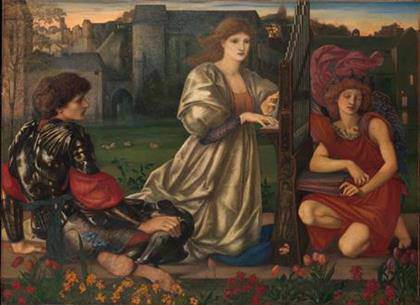
Openwork ivory plaque with striding sphinx
Assyria, Nimrud, Fort Shalmaneser
Neo-Assyrian, 9th–8th century B.C.
The Metropolitan Museum of Art, Rogers Fund, 1964 (64.37.1)
Image: © The Metropolitan Museum of Art, New York
‘Assyria to Iberia’ at the Metropolitan Museum ‘Assyria to Iberia at the Dawn of the Classical Age’ traces the roots of interaction between the ancient Near East and the Mediterranean shores and their impact on the artistic traditions. Metropolitan Museum, September 22, 2014–January 4, 2015.]]>
Source: Metropolitan Museum of Art
At its height in the 8th to 7th century B.C., the Assyrian Empire was the dominant power of the ancient Near East and the largest empire the world had yet seen, spanning 1,000 miles in a continuous swathe from Assyria (present-day northern Iraq) to the Mediterranean. As Assyria expanded, the Phoenician city-states of the Levant—precariously located along the edge of Assyrian territory—were compelled to expand and strengthen their maritime trade networks to the west. The mercantile connections they established along the northern coast of Africa and the southern coast of Europe to the strait of Gibraltar and beyond, to the Atlantic, became conduits for raw materials, luxury goods, images, and ideas between the Near East and the Mediterranean.
The landmark exhibition “Assyria to Iberia at the Dawn of the Classical Age” traces —through some 260 works of art on loan from major collections in Western Europe, the Caucasus, the Middle East, North Africa, and the United States— the deep roots of interaction between the ancient Near East and the lands along the shores of the Mediterranean and their impact on the artistic traditions that developed in the region. Parallels are also drawn between works in the exhibition and those in the Metropolitan Museum’s permanent collection in the Department of Ancient Near Eastern Art.
The exhibition is organized around three major themes: Assyria’s land-based expansion from northern Mesopotamia westward through military conquests in the early first millennium B.C.; Phoenician expansion by sea through the development of trading relationships and founding of colonies; and the adoption and adaptation of Near Eastern imagery and techniques by artisans in the western Mediterranean. A concluding gallery displays works that represent the shift of power to Babylon after the sack of Nineveh (the Assyrian capital) in 612 B.C. Reference are made to relevant passages in the Bible, the epics of Homer, and other texts that concern the historical people, places, customs, and events represented in the exhibition.
Among the works on view are monumental sculptures and wall reliefs, masterfully carved ivories, fine metalwork, and luxurious jewelry created by ancient artisans from throughout the Near East and Mediterranean, brought together from 41 museums in 14 countries.
Related content
Flowering of Edo Period Painting – Metropolitan Museum (exhibition, 2014)
Follow us on:


